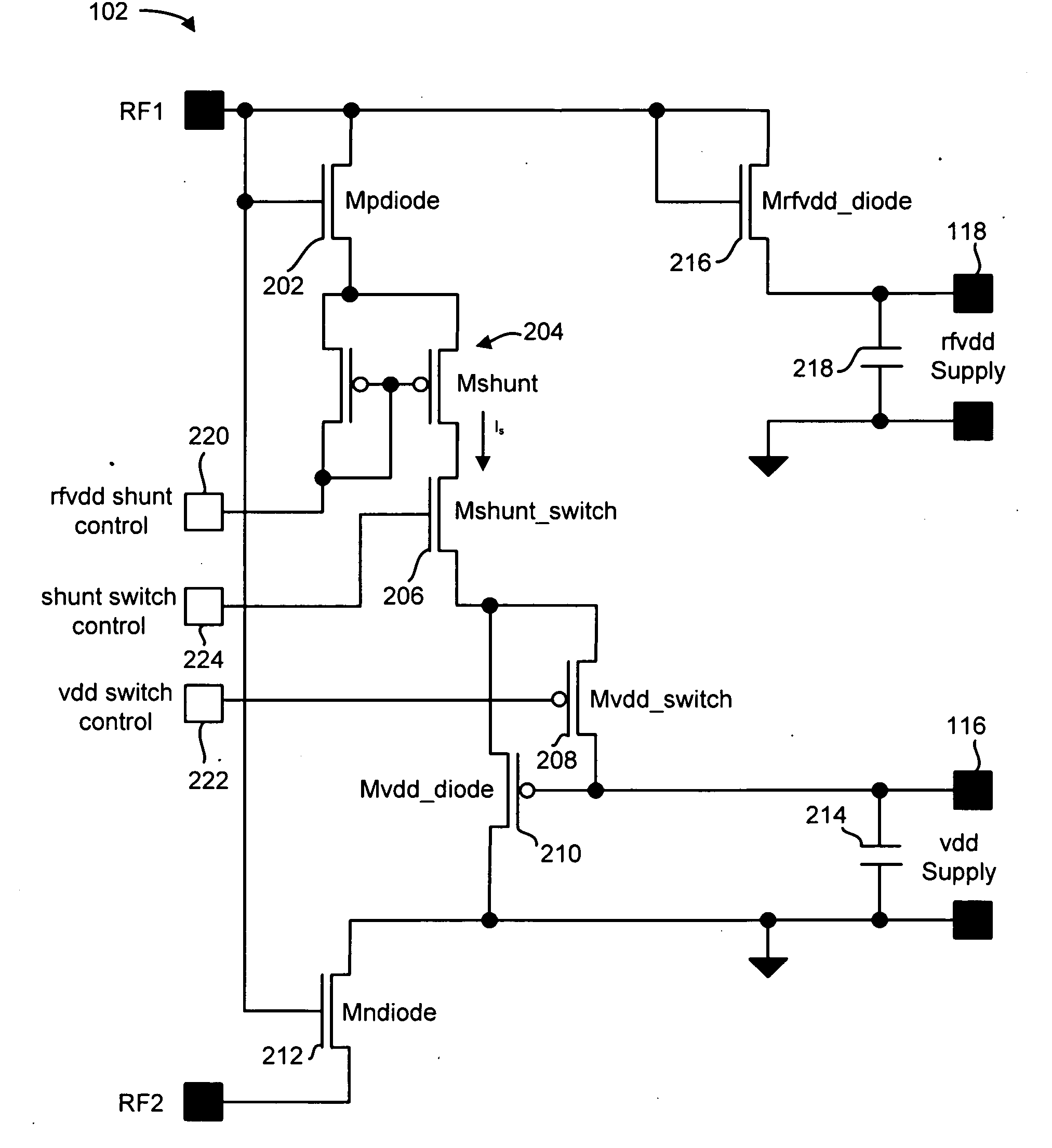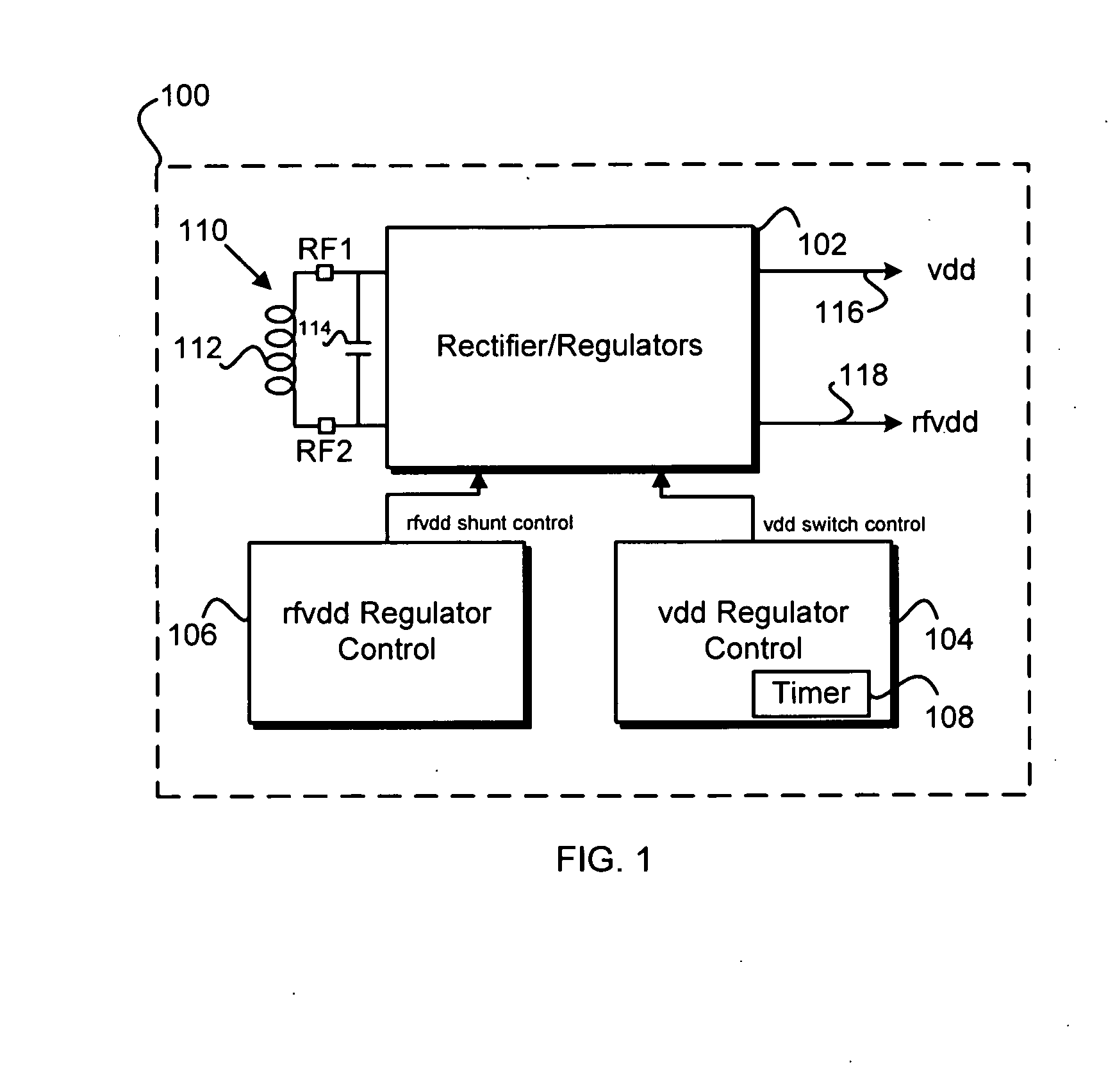Contactless Interface
a contactless interface and interface technology, applied in the field of electronic interfaces, to achieve the effects of simple control loops, reduced size of decoupling capacitors, and faster acting regulators
- Summary
- Abstract
- Description
- Claims
- Application Information
AI Technical Summary
Benefits of technology
Problems solved by technology
Method used
Image
Examples
example switching
Regulator Circuit
[0016]FIG. 2 is a simplified schematic diagram of example switching regulator circuit 102 of FIG. 1. The switching regulator circuit 102 is active when RF1 is at a higher potential then RF2. This is true for half of the carrier cycle. A second identical circuit can be used on the other half of the carrier cycle when RF2 is at a higher potential than RF1.
[0017]Rectification of the alternating current (“carrier signal”) output from resonant circuit 110 (e.g., antenna 112 and capacitor 114) is performed by devices 216 (Mrfvdd_diode), 202 (Mpdiode) and 212 (Mndiode). In some implementations, devices 216, 202, 212 are transistors (e.g., MOSFET) biased to operate as diodes, allowing current to flow in one direction through the devices. Devices 216, 202, 212 form a half bridge rectifier circuit. Device 212 couples RF2 to ground. Device 202 provides current to supply current mirror 204 (Mshunt) and vdd voltage supply rail 116. Device 216 provides current to supply circuits ...
PUM
 Login to View More
Login to View More Abstract
Description
Claims
Application Information
 Login to View More
Login to View More - R&D
- Intellectual Property
- Life Sciences
- Materials
- Tech Scout
- Unparalleled Data Quality
- Higher Quality Content
- 60% Fewer Hallucinations
Browse by: Latest US Patents, China's latest patents, Technical Efficacy Thesaurus, Application Domain, Technology Topic, Popular Technical Reports.
© 2025 PatSnap. All rights reserved.Legal|Privacy policy|Modern Slavery Act Transparency Statement|Sitemap|About US| Contact US: help@patsnap.com



